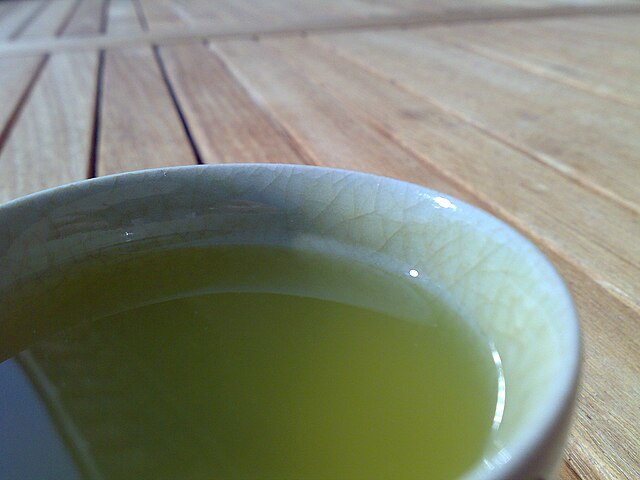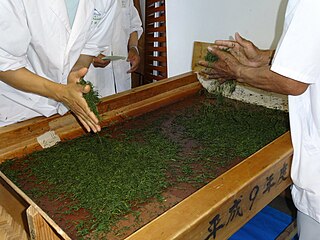Preparing Tea the Best Way Possible

The best green tea comes from Japan
I believe bad preparation is the key reason why so many
people hate the taste of tea. The reason quite a few individuals haven't had
the pleasure of enjoying well-made tea is easy to comprehend, considering the
huge variation in the method of brewing for different varieties of tea. And
when specific errors are made, the ensuing tea tastes disgusting. Not to worry,
though, since any kind of tea can be made by using almost any method. Being
mindful of a few essential elements is really enough and I'll list those below.
Why don't we begin with the easy one? Black tea is far and away the simplest to
brew and very few individuals run into any real difficulties making a tasty
cup. Basically, use 100 ºC water and steep the leaves for a couple of minutes.
This method will work well for Assam tea and pretty much any of the widely consumed
Chinese teas, Ceylon teas or Nepalese teas. Darjeeling tea, however, is made
using a different process. It should be prepared employing colder water
(80-90ºC or 180-194ºF), owing to the fact that it is only somewhat oxidized and
essentially very similar to an oolong tea.
Green tea is not as easy to prepare the correct way, given the large variance
of different types and the large inconsistency in the method of brewing. The
appropriate water temperature and the steeping times are the two factors you
really need to pay attention to. 80°C (176°F) is the preferred temperature for
preparing the majority of green teas.
One exception is the Japanese tea gyokuro, arguably the best green tea available, which calls for
a colder water temperature of 50°C–60°C (122°F–140°F). The Japanese
Houjicha, which is roasted, is another exception. Perhaps the most difficult
tea to screw up, it can simply be made employing 100°C water. The guidelines
printed on the packaging will suggest a good time to start in terms of steeping
times. Otherwise, try starting with a minute and a half for gyokuro and two
minutes for all other teas.
Ignore all that above, if you're brewing Matcha green tea powder; it is very
different from all the other green teas. Since it is a powder, it necessitates a
unique and pretty complicated method of brewing, which includes special gear.
Matcha is the tea featured in the Japanese tea ceremony and if you've ever seen
one done, you are familiar with how involved it can get to prepare matcha. I
would prefer not to ramble on for the length of a major novel, so I'll leave
off delving into any details on the way of brewing for this very high quality
tea.
White tea can be a bit more difficult to brew properly, too. The leaves are
very delicate, so it requires a much lower water temperature than green tea.
The correct range for both White Hair Silver Needle and White Peony is 75-80°C
(167-176°F). When it comes to steeping times, try 2-3 minutes and vary until
you're happy with the result. If you prefer a stronger cup of tea, add to your
steeping time; if you like your tea less astringent, subtract from the steeping
time.
The most difficult kind of tea to brew well, excepting matcha, is oolong tea.
The traditional gongfu style of brewing requires many quick infusions using a
heap of leaves. Not to worry, however; you can prepare oolong teas by sticking
to standard methods and they will taste wonderful. Take care to watch the water
temperature: it has to be just a little below the boiling point.
No doubt you're thinking the instructions I've given are quite a bit basic. Of
course, to prepare the best tasting cup, you'll need to make use of the
guidelines for the specific type of tea (see http://www.letsdrinktea.com/). If you don't have those, however,
using my instructions will result in an enjoyable cup of tea, no matter the
type. Hopefully, this should embolden at least a couple of men and women who
have in the past determined they can't stand tea, to give it another taste. I
am certain you'll be grateful you did.
Why is Green Tea the Best?
 Hand rolling gren tea after it has been steamed
+
Hand rolling gren tea after it has been steamed
+
From the title of this website, you can probably guess that I prefer green tea to all other types of tea. You might think the reason for that would be the taste or the health" benefits of tea, but that's not really it. I actually love the taste of all teas and a good oolong or white tea is every bit as delicious as the best green teas. So why do I prefer green tea? Two reasons: the enormous variety of available types and the fact that most green tea is quite inexpensive.
Let's look at the first factor. The first major division in green teas is between Chinese teas and Japanese teas. In general, Chinese teas are roasted to stop the fermentation process, while Japanese teas are steamed. This means that Chinese teas generally have a milder taste and Japanese teas are somewhat more astringent and have a more grassy flavor. Of course there are exceptions: the Japanese tea hoijicha, for example, is roasted and has a flavor more reminiscent of a Chinese tea.
When it comes to Japanese teas, the highest quality you can get is the shade grown gyokuro. Growing it in the shade means that the leaves need more chlorophyll to make up for the lack of sunlight. More chlorophyll means more nutrients, making this tea healthier and also giving it a very smooth taste. The green tea powder matcha is made from the same leaves, meaning it is actually more expensive, and many would say more delicious, than gyokuro. On the other end of the spectrum, bancha, meaning common tea, is the cheapest Japanese tea and also the lowest quality.
Dragon well tea is the highest quality Chinese green tea. It is also a shade grown tea. Unlike in Japan, in China there is a huge variety in levels of quality, so there are many available grades of longjin (the Chinese name for Dragon Well). Apart from the smooth and mild taste, another characteristic of Chinese teas is that they are much easier to brew than their Japanese counterparts.
Other countries that produce green teas you might find on the market are Nepal, India, Vietnam and Sri Lanka. Apart from Vietnam, these countries are actually better known for their black teas. The green varieties simply aren't as good. None of the Vietnamese teas are as good as the ones you find in Japan or China either. Simply stated, if you want great green tea, you need a Japanese or a Chinese variety.
The second factor, the inexpensive price, is true for almost
all varieties. Actually, it's basically true for all of them. Even the highest
quality green tea you can find is attainable by almost everyone. This is not
like wines, when no one can afford the best ones. Tea is affordable, no matter
how good it is. And no matter how low the quality, if it's a loose leaf tea,
it's almost always still going to taste good. Tea is one of the cheapest drinks
on earth and it's very obvious why it's the most popular drink apart from
water. And when it comes to tea, green tea is the best.
For more on the health benefits of green tea try Web MD.
Green Tea is the Best Drink on Earth

Green tea is the world's best drink. It is not the most popular drink; that honor belongs to water. Tea is the second most popular drink, however. Of course much of that is black tea, but green tea is better than black. Green tea is better than anything. It is the best.
Before we even begin to get into the reasons, we need to define what I mean by green tea. I mean just that: tea brewed from tea leaves with nothing added. I don't mean an ultra-sweet cup of sugar water with a tea flavor or a cup of tea with any kind of strange flavor added. I'm talking about plain, simple tea. Now to the reasons for why it's the best drink.
First of all, nothing quenches your thirst more than a cup of green tea. I learned this in Japan. They sell plain green tea in bottles at convenience stores. The plastic bottles are chilled and nothing hits the spot more on a hot summer's day. The slight bitterness and the complete lack of sugar does more to quench thirst than any other drink. Water comes close, but the added bitterness and flavor of the tea beats water every time. I learned within a week in Japan, that sugar actually makes you thirstier and taking it out of your drinks makes such a huge difference.
Second, a cup of hot tea on a cold winter afternoon or one of those dreary, rainy days is pure bliss. I love sitting on a porch with a roof keeping me dry, while watching the rain pummel the world outside and nothing goes better with this activity than a cup of green tea.
Why green tea? Well, it tastes better than black tea and has
more varieties and is cheaper than the other kinds. Oolong tea is wonderful too,
as is white tea, but both are more expensive than green tea, assuming you're
buying quality and the they are also harder to find. You might think I prefer green tea due to the health benefits, but in actuality, all tea enjoys similar benefits.
Yes, I realize this is a highly personal article; personal in the sense that it is completely my opinion. So why don't you tell me in the comments what you think? Do you agree that green tea is the best drink on earth or do you have your own favorite thirst quencher? What drink do you reach for on a cold winter day? And what drink do you want on a hot summer day? What drink helps you relax? What drink do you want after a physical activity? I'm actually really curious, so let me know!